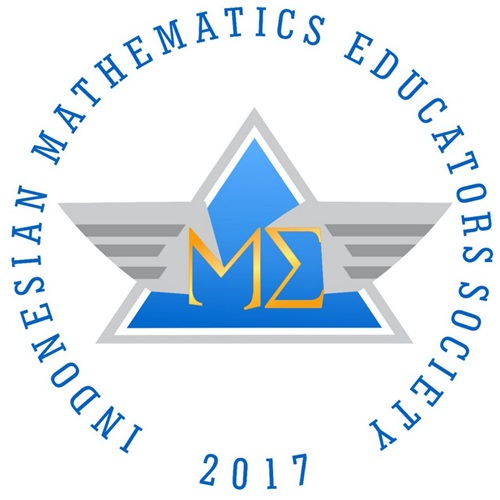Analysis of Class VII Students' Mathematical Problem-Solving Abilities on Triangles and Quadrilaterals
DOI:
https://doi.org/10.22437/edumatica.v13i03.21090Keywords:
analysis, mathematics problem solving skill, triangels and rectangelsAbstract
Problem-solving skills are basic mathematical skills that must be mastered after students learn mathematics. This study aims to describe the mathematical problem solving ability of grade VII MTs Riyadlotul 'Uqul Tangerang students. The research method used is descriptive qualitative research with the sampling technique used is the purposive sampling method. The subjects in this study were 31 students of grade VII MTs Riyadlotul 'Uqul Tangerang, where three students were selected based on their ability to solve math problems at a high, medium, or low level. Data collection techniques in this study are by tests, interviews, and documentation. The results showed that the mathematical problem solving ability of grade VII students of Mts Riyadlotul 'Uqul on triangular and quadrilateral material was still relatively low according to the Polya indicator. The ability to solve high, medium and low categories of mathematical problems, obtained the highest achievement of students on the four indicators of solving mathematical problems is on the indicator of understanding problems. Students are already able to identify what is known and asked appropriately. Meanwhile, the lowest achievement of students is in the indicator of re-examining or interpreting the results obtained.
Downloads
References
Aliah, S. N., & Bernard, M. (2020). Analisis Kesulitan Siswa dalam Menyelesaikan Soal Pemecahan Masalah Berbentuk Cerita pada Materi Segitiga dan Segiempat. Suska Journal of Mathematics Education, 6(2), 111. https://doi.org/10.24014/sjme.v6i2.9325
Anggraeni, R., & Kadarisma, G. (2020). Analisis Kemampuan Pemecahan Masalah Matematis Siswa Kelas VII Pada Materi Himpunan. Jurnal Cendekia, 4(2), 1072-1082. https://doi.org/10.31949/educatio.v8i2.1990
Ani, E. U., & Rahayu, P. (2018). Profil Kemampuan Pemecahan Masalah Matematika Siswa Berbentuk Soal Cerita Materi Bangun Ruang. Jurnal Riset Pendidikan Dan Inovasi Pembelajaran Matematika (JRPIPM), 1(1), 40. https://doi.org/10.26740/jrpipm.v1n1.p40-49
Asih, N., & Ramdhani, S. (2019). Peningkatan Kemampuan Pemecahan Masalah Matematis dan Kemandirian Belajar Siswa Menggunakan Model Pembelajaran Means End Analysis. Mosharafa: Jurnal Pendidikan Matematika, 8(3), 435-446. https://doi.org/10.31980/mosharafa.v8i3.534
Batubara, N. F., Mukhtar, Surya, E., & Syahputra, E. (2017). Analysis of Student Mathematical Problem Solving Ability at Budi Satrya of Junior High School. International Journal of Advance Research and Innovative Ideas in Education (IJARIIE), 3(2), 2170-2173. www.ijariie.com
Bernard, M., Nurmala, N., Mariam, S., & Rustyani, N. (2018). Analisis Kemampuan Pemecahan Masalah Matematis Siswa SMP Kelas IX Pada Materi Bangun Datar. SJME (Supremum Journal of Mathematics Education), 2(2), 77-83.
Harahap Elvira, S. E. (2020). Perbandingan Kemampuan Pemecahan Masalah Matematis Siswa Kelas Vii Dalam Menyelesaikan Persamaan Linier Satu Variabel. 07(April), 44-54.
Kushendri, & Zanthy, L. S. (2019). Analisis Kemampuan Pemecahan Masalah Matematis Siswa SMA. Jurnal On Education, 1(3), 94-100. https://doi.org/10.31949/th.v7i1.3824
Mulyati, T., Wahyudin, W., Herman, T., & Mulyana, T. (2021). Effect of Integrating Children's Literature and Problem Solving Learning on Elementary School Student's Mathematical Reading Comprehension Skill. International Electronic Journal of Mathematics Education, 12(3), 217-232. https://doi.org/10.29333/iejme/610
Noviyanti, E. D., Purnomo, D., & Kusumaningsih, W. (2021). Analisis Kemampuan Berpikir Reflektif dalam Pemecahan Masalah Matematika Ditinjau dari Gaya Kognitif. Imajiner: Jurnal Matematika Dan Pendidikan Matematika, 3(1), 57-68. https://doi.org/10.26877/imajiner.v3i1.7097
Nurussafa'at, F. A., sujadi, I., & Riyadi, R. (2016). Analisis Kesalahan Siswa dalam Menyelesaikan Soal Cerita pada Materi Volume Prisma dengan Fong's Schematic Model for Error Analysis Ditinjau dari Gaya Kognitif Siswa (Studi Kasus Siswa Kelas VIII Semester II SMP IT Ibnu Abbas Klaten Tahun Ajaran 2013/2014. Jurnal Elektronik Pembelajaran Matematika, 4(2), 174-187. http://jurnal.fkip.uns.ac.id
Nuryana, D., & Rosyana, T. (2019). Analisis Kesalahan Siswa SMK dalam Menyelesaikan Soal Pemecahan Masalah Matematik pada Materi Program Linear. Jurnal Cendekia: Jurnal Pendidikan Matematika, 3(1), 11-20.
Permendikbud. (2013). Permendikbud No. 54.
Pimta, S., Tayruakham, S., & Nuangchale, P. (2009). Factors Influencing Mathematic Problem-Solving Ability of Sixth Grade Students. Journal of Social Sciences, 5(4), 381-385. https://doi.org/10.3844/jssp.2009.381.385
Polya, G. (1973). How To Solve It: A New Aspect of Mathematical Method. New Jersey: Princeton University Press
Ruhyana. (2016). Analisis Kesulitan Siswa Dalam Pemecahan Masalah Matematika. Jurnal Computech & Bisnis, 10(2), 106-118. http://jurnal.stmikmi.ac.id/index.php/jcb/articl
Sahrudin, A. (2016). Implementasi Model Pembelajaran Means- Ends Analysis Untuk Meningkatkan Kemampuan Pemecahan Masalah Matematika Mahasiswa. Jurnal Pendidikan Unsika, 4(1), 17-25.
Sajadi, M., Amiripour, P., & Rostamy-Malkhalifeh, M. (2013). The Examinig Mathematical Word Problems Solving Ability under Efficient Representation Aspect. Mathematics Education Trends and Research, 2013, 1-11. https://doi.org/10.5899/2013/metr-00007
Saragih, S., & Habeahan, W. L. (2014). The Improving of Problem Solving Ability and Students' Creativity Mathematical by Using Problem Based Learning in SMP Negeri 2 Siantar. 5(35).
Simamora, R. E., Saragih, S., & Hasratuddin, H. (2018). Improving Students' Mathematical Problem Solving Ability and Self-Efficacy through Guided Discovery Learning in Local Culture Context. International Electronic Journal of Mathematics Education, 14(1). https://doi.org/10.12973/iejme/3966
Siswono, T. Y. E. (2016). Upaya Meningkatkan Kemampuan Berpikir Kreatif Siswa Melalui Pengajuan Masalah. 1, 1-15.
Suastika, K. (2017). Mathematics Learning Model of Open Problem Solving to Develop Students' Creativity. International Electronic Journal of Mathematics Education, 12(3), 569-577. https://doi.org/10.29333/iejme/633
Suryani, M., Jufri, L. H., & Putri, T. A. (2020). Analisis Kemampuan Pemecahan Masalah Siswa Berdasarkan Kemampuan Awal Matematika. Mosharafa: Jurnal Pendidikan Matematika, 9(1), 119-130. https://doi.org/10.31980/mosharafa.v9i1.605
Violita, G., Syahbana, A., & Septiati, E. (2021). LAPLACE: Jurnal Pendidikan Matematika Kemampuan Pemecahan Masalah Matematis Siswa SMP PGRI 1 Palembang pada Materi Segiempat. Jurnal Pendidikan Matematika, 4(2), 169-179. https://doi.org/10.31537/laplace.v4i2.551
Wahyudi, Anugraheni, A., (2017). Strategi Pemecahan Masalah Matematika. Salatiga: Satya Wacana Universty Press
Wibowo, T., Sutawidjaja, A., As'ari, A. R., & Sulandra, I. M. (2021). Characteristics of Students Sensory Mathematical Imagination in Solving Mathematics Problem. International Electronic Journal of Mathematics Education, 12(3), 609-619. https://doi.org/10.29333/iejme/637
Yeliz, Y. (2015). Sixth graders and non-routine problems: Which strategies are decisive for success? Educational Research and Reviews, 10(13), 1807-1816. https://doi.org/10.5897/err2015.2230
Zulfitri, H. (2019). Analisis Kemampuan Pemecahan Masalah Matematika Setelah Pembelajaran dengan Pendekatan MEAs pada Materi Sistem Persamaan Linier Tiga Variabel. Jurnal Gantang, 4(1), 7-13. https://doi.org/10.31629/jg.v4i1.881
Downloads
Published
How to Cite
Issue
Section
License
Copyright (c) 2023 Robiatul Adawiyah, Leny Hartati, Soeparlan Kasyadi

This work is licensed under a Creative Commons Attribution-NonCommercial-ShareAlike 4.0 International License.







